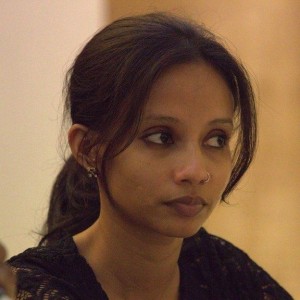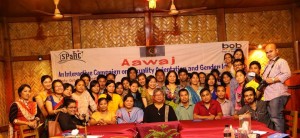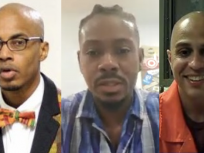
During the 1970s, in response to concerns about the assimilationist nature of the convention, the United Nations began to examine in more detail issues regarding indigenous and tribal peoples. The convention was revised and Convention No. 169 was adopted. ILO Convention No. 169 referred to ITPs (indigenous and tribal peoples) as permanent societies with distinct cultures different from the majority populations in their countries.
However, despite Convention No. 107 no longer being open for ratification since the adoption of Convention 169, it is still in force in 18 countries, including my home country Bangladesh, which has a number of significant indigenous populations.
To identify who is indigenous, there are some criteria which are looked at. The criteria were set considering the diversity of ITPs around the world as they often share similarities, and suffer similar oppression. The criteria are:
• Self- identification as indigenous peoples at the individual level and accepted by the community as their member
• Historical continuity with pre-colonial and/or pre-settler societies
• Strong link to territories and surrounding natural resources
• Distinct social, economic or political systems
• Distinct language, culture and beliefs
• From non-dominant groups of society
• Resolve to maintain and reproduce their ancestral environments and systems as distinctive peoples and communities.
So, when one looks into who ITPs are, it is clear that such peoples are culturally distinct from dominant groups in their society and have faced a long history of oppression as a result of their distinctiveness.
Anyone with a basic understanding of women’s rights and patriarchy also no doubt can imagine the high levels of oppression the women in such communities face, despite the national, international declarations and laws intended to safeguard them.
ITP women face oppression firstly for belonging to a minority group which is culturally and ethnically entirely different from the majority community of a country. Secondly, men from the majority population often have fantasies about the “exotic” indigenous women. These fantasies often lead to bullying, harassment, violence and abuse against indigenous women and, to make matters worse, the perpetrators from majority community are rarely prosecuted for their crimes. Thirdly, tragically their sufferings don’t end there; they also suffer violence from men from their own community, from rape to honour killings, from threats to cutting their hair as a punishment to shame them for not acting in the “proper indigenous way”.
As I noted, indigenous women sadly experience sexism from within their own community. In Bangladesh, a majority of the indigenous communities are patriarchal except the Garos and Khasis are matrilineal. Thus, most of the women in indigenous communities do not have inheritance rights to family properties, despite working as hard or harder than their male counterparts, usually without pay. When women raise these issues at forums demanding equal property rights, one of the arguments against this is that if they allow women to have rights over property then the indigenous communities will eventually lose their land through marriage. They raise the example of many indigenous girls who choose their life partner outside of their own community. However , they rarely consider why indigenous women are choosing partners outside of the community. Perhaps because if they do the men may no longer be able to enjoy the advantages awarded to them simply because they were born as men.
In Chittagong Hill Tracts region of Bangladesh where I live, there are many traditional customs practiced that discriminate against women, such when a husband and wife separate the husband is allowed to take their son during a marital separation even if the son is still breast feeding. Furthermore, the father still has the right to hand over his daughter to any person he chooses to be his daughter’s life partner. Even if the daughter is an adult, she can’t say no. There are also “correctional” weddings arranged by the “guardian of the community” for women and girls who society thinks have not performed their social role as “good girls/women”.
Two common examples of what indigenous society uses to gauge whether women are indigenous or good enough are:
- Indigenous women have to wear their traditional clothes (though indigenous men can wear whatever they want)
- Indigenous women must choose their life partner from the indigenous community (though indigenous men can choose whomever they want)
The UN Declaration on the Rights of Indigenous Peoples (UNDRIP) is often quoted by ITPs rights activists when the state violates indigenous peoples’ rights. Article 7 of UNDRIP states that “Indigenous individuals have the rights to life, physical and mental integrity, liberty and security of person.”
However, very few violations against ITPs women are challenged by ITPs activists. ITPs rights activists rather have the tendency to promise ITPs women rights to be ensured but suggest ITPs women rights activists not to talk about sexist practices publicly as it could make the community look bad. Many indigenous women activists including myself believed their promises and hoped that they would reform all sexist traditional practices inside the community. Sadly, in reality, very few steps have been taken by them.
So, nowadays, I along with others ITP women activists have begun talking about sexism publicly in women’s rights forums where indigenous women’s rights were always overlooked; we started talking about this in regional traditional forums where they talk about oppression by the non ITPs but avoid talking about ITP men oppressing ITP women. Now we have begun to see a slow change in some cases.

Article 22 (2) of UNDRIP notes that: “States shall take measures, in conjunction with indigenous peoples, to ensure that indigenous women and children enjoy the full protection and guarantees against all forms of violence and discrimination.” But in reality, the state actually takes very few steps to ensure such rights. Our experiences show that in almost every case of violence against indigenous women (VAIW), the perpetrators get no punishment. According to Bangladesh Home Ministry statistics provided to human rights organisation Bangladesh Legal Aid and Services Trust (BLAST), from 2010 to 2011 not a single verdict was given punishing alleged perpetrators in the 57 cases filed by indigenous women. All of these cases were filed under the Women and Children Repression Prevention Tribunals of Chittagong Hill Tracts(CHT).
Kapaeeng Foundation’s findings state that 160 cases- including rape, killing after rape and sexual harassment- were filed in these tribunals from 2007 to 2012. Outside CHT, up until 2012, only one of these cases- the killing of Mariam Murmu- resulted in a verdict punishing the perpetrators. One more case, again outside CHT in September 2013, saw the light of justice in a Chittagong tribunal.
Case studies suggest that one of the main objectives for committing sexual violence against indigenous women is to create terror among the ITPs and create tension among the ITPS in order to uproot them from their ancestral lands with an aim to grab their lands gradually.
Being indigenous is a risk when the world tends to disrespect your distinct culture. Being a woman from an indigenous community reminds you every single day that you shouldn’t have been born, in that nobody cares about your rights, security, dreams or expectations. Neither do the people from the majority community – who claim themselves to be more civilised – nor the men from your own community who are supposed to at least respect you given you share the same pain, same dreams. A 2014 human rights report noted that 2.5% of the identified perpetrators of serious VAIW were men from their own community.
Reports from around the world demonstrate that indigenous sisters around the world also face similar types of oppression and violence which means we are not alone and we can and should all work collectively for our rights and every other cause that we want to work for.
So, what do indigenous women need to do to ensure their rights? As far as my experience goes, I can suggest becoming courageous and responsible. We, women from native communities, need to raise our voices against any gender based violence, regardless of who the perpetrator is. We need to build awareness in the society and be responsible to the community which is facing oppression for being a minority.
I believe that “courage is contagious”. I believe that if ITP women across the world join hands together, there is no power powerful enough to treat us as objects rather than people. I don’t believe there is anything so sacred it can bar us from talking about the violence that we face in the name of honor, culture, religion, nationalism, indigenousness and so on. We have a right to talk about it and demand justice. If they don’t like us talking about sexist practices and violence, it’s their duty to stop being sexist and violent, not our duty to stay silent.
Muktasree Chakma Sathi is a rights activist, researcher, columnist and journalist who has been working for minorities’ rights for more than 14 years, with a particular focus on the rights of women, children, indigenous peoples and LGBT people. Currently she is a Core Group Member of SANGAT, A South Asian Feminist Network formed in 1998 . She recently founded SPaRC (Supporting People and Rebuilding Communities) in Bangladesh and working as the Executive Director of the organization.





Thank you for being “courageous and responsible”, Muktasree. Wonderful to read this. Solidarity with you and all indigenous sisters speaking out for change. You are making it happen..